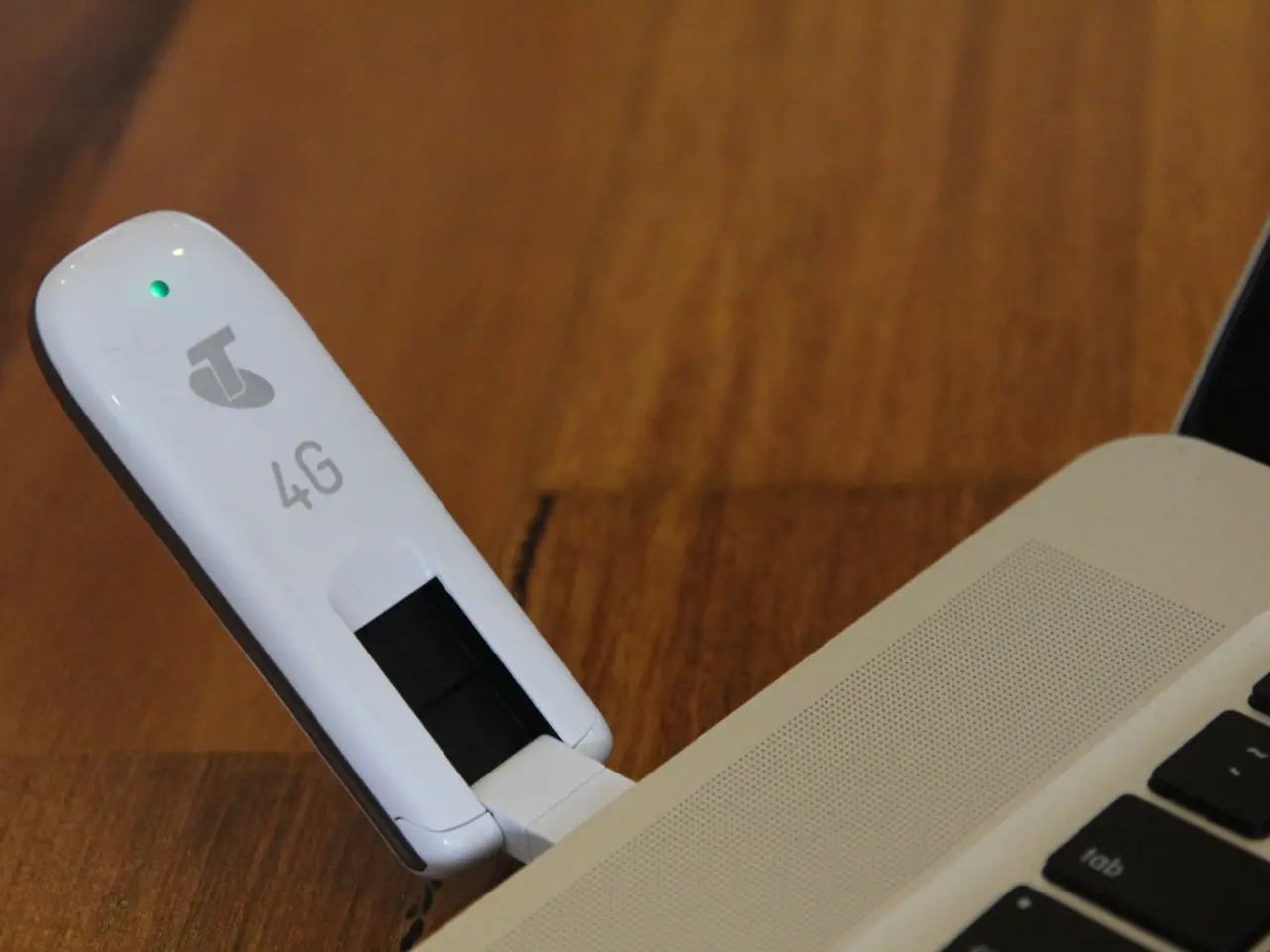Modern Communication Options: Developing Comparison Between Flat Panel and Satellite (VSAT) Terminals in Satellite Communications
communication landscape is rapidly evolving with groundbreaking technologies in the satellite sector. Traditional Very Small Aperture Terminals (VSATs) have long held the reins, with their characteristic parabolic dish antennas, such as the Very Small Aperture Terminal (VSAT). However, the rollout of flat panel satellite terminals has opened a new chapter in the satellite communication game. Here's an unvarnished breakdown of the key differences, advantages, disadvantages, and potential uses of each technology.
Working the Radio Waves: VSATs vs Flat Panel Terminals
VSATs: Old Dog, New Tricks
VSATs have been the unsung heroes of satellite communication for decades. Their defining feature is their small, disk-shaped antenna, usually ranging from 0.6 to 3.8 meters in diameter. These versatile devices serve as two-way ground stations, capable of transmitting and receiving data from geosynchronous satellites gracefully orbiting far above. VSATs are deployed across a wide array of applications:
- Telecommunications in remote regions
- Corporate networking
- Point-of-sale transactions
- Video broadcasting
- SCADA systems for industrial automation
Flat Panel Terminals: The Chic Interloper
Flat panel satellite terminals represent cutting-edge innovation, transforming the satellite communication landscape. These sleek, flat rectangular devices employ sophisticated phased array antenna technology, consisting of a multitude of small antenna elements strategically arranged within the panel. Instead of requiring mechanical dish repositioning for beam focusing, as with VSATs, electronic steering directs the beam towards the satellite.
Differences Between the Two Technologies: A Closer Look
- Form Factor: The most prominent distinction lies in their physical appearance. VSATs feature a circular parabolic dish, while flat panel terminals boast a low-profile, flat array design that blends more naturally into surroundings.
- Beam Steering: VSATs require precise mechanical rotation to align with satellites. Flat panel terminals, on the other hand, achieve beam steering electronically, providing increased flexibility and resilience against physical disruptions.
- Portability: The reduced size and weight of flat panel terminals, combined with their electronic beam steering, make them exceptionally portable for use in on-the-move applications like maritime vessels, aircraft, and remote vehicles.
- Multi-Satellite Capability: The ability to electronically switch between satellites allows flat panel terminals to simplify communication with multiple satellites, especially those in low Earth orbit (LEO) constellations.
Benefits of Flat Panel Satellite Terminals
- Less Obtrusive Profile: The flat, low-profile design of flat panel terminals makes them less conspicuous compared to VSATs, making them ideal for applications where aesthetics play a crucial role.
- Simplified Installation: The removal of the need for precise mechanical pointing during installation significantly cuts down on time, technical expertise, and costs.
- Wind Resistance: The sturdy, low-profile design of flat panels makes them less susceptible to wind, weather, and other physical disturbances that can hinder signal quality.
- Multi-Satellite Capability: The ability to interact with multiple satellites broadens horizons for LEO constellations like SpaceX's Starlink.
Benefits of VSATs
- Cost Effectiveness: VSATs have established themselves as a cost-effective solution, mainly due to their mature technology and widespread adoption.
- Higher Throughput (in some cases): Under specific circumstances, some VSAT systems can achieve higher data throughput, making them ideal for demanding bandwidth applications.
Drawbacks of Flat Panel Satellite Terminals
- Higher Cost: Flat panel terminals are currently more expensive than their VSAT counterparts, primarily due to their novelty and the intricacy of phased array antenna technology.
- Potential Performance Limitations: In certain instances, flat panel terminals may lack the same level of gain or throughput compared to larger VSAT dishes, which could restrict their suitability for high-bandwidth applications.
Drawbacks of VSATs
- Cumbersome Installation: The installation and alignment process for VSATs can be complex, slowing down deployment times and requiring specialized technical knowledge.
- Vulnerability to Obstacles: The line-of-sight requirement for satellite communication can make VSATs susceptible to disruptions from natural and man-made obstacles.
- Limited Mobility: The reliance on mechanical antenna positioning hampers VSATs' ability to adapt to mobile environments.
Applications of Flat Panel Satellite Terminals and VSATs
Flat Panel Satellite Terminals
- Residential and Commercial Broadband: Flat panels are becoming popular for providing high-speed internet to both homes and businesses in areas lacking traditional terrestrial infrastructure.
- Maritime Communication: Their ease of installation, portability, and ability to track multiple satellites make them ideal for sailors, yachters, and marine vessel communications.
- Mobile Connectivity: These terminals can be mounted on vehicles, RVs, trains, and airplanes to provide reliable internet access on the go.
- Aviation Communications: For in-flight connectivity, nothing beats a flat panel terminal, whether for commercial aircraft or private jets.
VSATs
- Remote Site Connectivity: VSATs prove invaluable for establishing communication links to remote locations, such as oil rigs, mining operations, and scientific outposts.
- Enterprise Networks: Companies heavily dependent on fast, reliable internet, such as multinational corporations and government agencies, rely on VSATs for their communication needs.
- Disaster Relief and Emergency Response: When disaster strikes, and terrestrial communication goes out the window, resilient VSATs can save the day for first responders and disaster relief teams.
The Future of Satellite Communication
The future of satellite communication remains a thrilling mix of innovation and tradition, with both flat panel satellite terminals and VSATs holding their places in the space race. Flat panels, with their mobility, ease of installation, and multi-satellite capabilities, are well-positioned to penetrate new markets and expand access in underserved regions. However, the tried-and-true VSATs will continue to play essential roles, especially where cost-effectiveness and high performance remain the priority. In the coming years, expect a harmonious blend of these technologies, serving various connectivity needs and pushing the frontier of space communication.
- Tags
- Communications
- Constellations
- Earth
- Infrastructure
- Maritime
- Satellites
- Starlink
- Technology
- SpaceX
- Telecommunications
- Connectivity
- Remote areas
- Industrial automation
- Urban areas
- Aesthetics
- Design
- Aeronautics
- Phased array antennas
- Ease of use
- Cost-effective
- High-bandwidth applications
- Demanding environments
- Spacecraft
- First responders
- Disaster relief
- Emergency response
- LEO
- The space economy and space-and-astronomy field have been significantly influenced by the emergence of space mining, with Earth observation satellites playing a crucial role in identifying viable mining sites on asteroids and other celestial bodies.
- As flat panel satellite terminals become more widely adopted for residential and commercial broadband, the space economy may experience a boom due to increased demand for high-speed internet services, particularly in underdeveloped regions.
- The advantages of flat panel satellite terminals in terms of portability and multi-satellite capability could potentially revolutionize science by enabling real-time data transmission from satellites orbiting in low Earth orbit (LEO) constellations like SpaceX's Starlink, fostering advancements in fields such as weather forecasting, Earth observation, and space technology.




